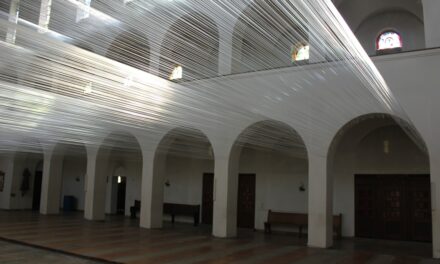The Phillips Collection, established in 1921, holds the distinction of being the first museum of modern art in the United States. Its inception was a response to the burgeoning interest in modernist art during the early 20th century, a period marked by significant cultural shifts and artistic experimentation. The museum was founded by Duncan Phillips, who sought to create a space that would not only showcase modern art but also foster a deeper understanding and appreciation of it among the public.
The collection began with a modest number of works, primarily acquired through Phillips’s personal purchases, reflecting his keen eye for emerging talent and innovative styles. Over the decades, the Phillips Collection has evolved significantly, both in terms of its holdings and its role within the art community. Initially focused on American and European modernism, the collection has expanded to include a diverse array of artworks that span various movements and periods.
This evolution mirrors broader trends in the art world, where the definitions of modernism and contemporary art have continually shifted. The museum has also played a pivotal role in promoting artists who were often overlooked during their lifetimes, thereby contributing to a more inclusive narrative of art history.
Summary
- The Phillips Collection was founded in 1921 by Duncan Phillips, a prominent art collector and visionary.
- Notable artworks in the collection include pieces by Renoir, Rothko, and Van Gogh, among others.
- The building and architecture of the Phillips Collection reflect a blend of historic and modern design elements.
- Educational and community programs at the Phillips Collection aim to engage and inspire visitors of all ages.
- Special exhibitions and events at the Phillips Collection offer unique opportunities to experience art in new and exciting ways.
Founder and Visionary: Duncan Phillips
Duncan Phillips was not merely a collector; he was a visionary who understood the transformative power of art. Born in 1886 into a family with a strong appreciation for culture and aesthetics, Phillips was exposed to art from an early age. His formative years were spent in an environment that encouraged intellectual curiosity and creativity, which would later inform his approach to collecting and curating.
After studying at Yale University and travelling extensively through Europe, Phillips developed a profound understanding of both classical and contemporary art movements. Phillips’s philosophy centred on the belief that art should be accessible to all, not just the elite. He envisioned a space where people could engage with modern art in a meaningful way, fostering dialogue and reflection.
This vision was realised with the establishment of the Phillips Collection, which he designed to be intimate and welcoming. His commitment to education and community engagement was evident from the outset, as he organised lectures, discussions, and exhibitions aimed at demystifying modern art for the general public. Phillips’s legacy is not only encapsulated in the artworks he collected but also in the enduring mission of the museum he founded.
Notable Artworks in the Collection
The Phillips Collection boasts an impressive array of artworks that reflect the evolution of modern art from the late 19th century to the present day. Among its most notable pieces is “Luncheon of the Boating Party” by Pierre-Auguste Renoir, a quintessential example of Impressionism that captures a lively social gathering on a sun-drenched terrace. This painting exemplifies Renoir’s mastery of light and colour, inviting viewers into a moment of joy and camaraderie.
The inclusion of such iconic works underscores Phillips’s commitment to showcasing pieces that resonate with both historical significance and emotional depth. In addition to Impressionist masterpieces, the collection features significant works by American artists such as Georgia O’Keeffe and Jacob Lawrence. O’Keeffe’s “Black Iris” is a striking representation of her unique approach to abstraction, where natural forms are transformed into bold shapes and colours.
Meanwhile, Lawrence’s “The Migration Series” offers a poignant narrative of African American history and resilience, capturing the struggles and triumphs of those who sought better lives during the Great Migration. These works not only highlight individual artistic achievements but also reflect broader social themes that continue to resonate today.
The Building and Architecture
The architectural design of the Phillips Collection is as integral to its identity as the artworks it houses. The museum is situated in a historic townhouse that was originally built in 1897, which adds an element of charm and intimacy to the visitor experience. The building underwent significant renovations under the guidance of architect Paul Philippe Cret in 1930, who expanded the space while preserving its original character.
This blend of old and new creates an inviting atmosphere that encourages exploration and contemplation. The layout of the museum is particularly noteworthy; it features a series of interconnected galleries that allow for a fluid movement between spaces. This design choice enhances the viewing experience, as visitors can engage with artworks in a more personal setting, akin to walking through an artist’s studio or a private collection.
Natural light floods many of the galleries, illuminating the artworks while creating an ever-changing interplay between light and shadow. The architectural choices made by Cret have ensured that the Phillips Collection remains not only a repository for art but also a work of art in itself.
Educational and Community Programs
The Phillips Collection places a strong emphasis on education and community engagement, recognising that art can serve as a powerful tool for learning and connection. The museum offers a variety of educational programmes designed for audiences of all ages, from school groups to adults seeking deeper insights into modern art. These programmes often include guided tours, workshops, and lectures led by knowledgeable educators who facilitate discussions around the themes and techniques present in the collection.
One notable initiative is the “Artful Conversations” programme, which invites participants to engage with artworks through dialogue rather than traditional lectures. This approach encourages visitors to share their interpretations and emotional responses to pieces, fostering a sense of ownership over their experience with art. Additionally, the museum collaborates with local schools to provide tailored educational experiences that align with curriculum goals while introducing students to the world of modern art.
Such efforts underscore the Phillips Collection’s commitment to making art accessible and relevant to diverse communities.
Special Exhibitions and Events
In addition to its permanent collection, the Phillips Collection regularly hosts special exhibitions that highlight specific artists, movements, or themes within modern art. These exhibitions often feature loans from other institutions or private collections, allowing for unique presentations that may not be possible within the confines of its permanent holdings. For instance, exhibitions focusing on underrepresented artists or lesser-known movements provide fresh perspectives on familiar narratives within art history.
Events at the Phillips Collection are equally diverse, ranging from artist talks and panel discussions to film screenings and live performances. These events create opportunities for dialogue between artists, scholars, and audiences, enriching the overall experience of visiting the museum. The annual “Phillips After 5” series exemplifies this commitment to community engagement; these evening events combine art with music, food, and social interaction, transforming the museum into a vibrant cultural hub where visitors can connect with one another while enjoying contemporary artistic expressions.
Conservation and Preservation Efforts
The preservation of artworks is paramount for any institution dedicated to maintaining its collection for future generations. The Phillips Collection employs a team of skilled conservators who are responsible for assessing and treating artworks to ensure their longevity. This involves meticulous examination processes that identify any signs of deterioration or damage, followed by careful restoration techniques tailored to each piece’s specific needs.
In addition to physical conservation efforts, the museum is committed to educating both staff and visitors about best practices for preserving artworks. Workshops on topics such as proper handling techniques or environmental controls are regularly offered to ensure that everyone involved in caring for the collection understands their role in safeguarding these cultural treasures. The Phillips Collection’s dedication to conservation reflects its broader mission: to not only celebrate modern art but also protect it as an essential part of our shared cultural heritage.
Visiting the Phillips Collection
Visiting the Phillips Collection offers an enriching experience for art enthusiasts and casual visitors alike. Located in Washington D.C., the museum is easily accessible via public transportation, making it an ideal destination for both locals and tourists. Upon arrival, guests are greeted by an inviting atmosphere that encourages exploration at their own pace.
The layout allows for intimate encounters with artworks, fostering personal connections that can be deeply moving. The museum also provides various amenities designed to enhance visitors’ experiences. A well-stocked gift shop offers books, prints, and unique items related to modern art, while a café provides a space for relaxation after exploring the galleries.
Additionally, guided tours are available for those seeking deeper insights into specific works or themes within the collection. With its rich history, diverse programming, and commitment to community engagement, a visit to the Phillips Collection promises not only an encounter with remarkable artworks but also an opportunity for personal reflection and discovery within the world of modern art.
If you are interested in learning more about art, you may want to read an introduction to the artist Claude Monet. This article provides insight into the life and work of the renowned French painter, known for his Impressionist style. It is a fascinating read that complements the exploration of the Phillips Collection in Washington D.C., USA.




